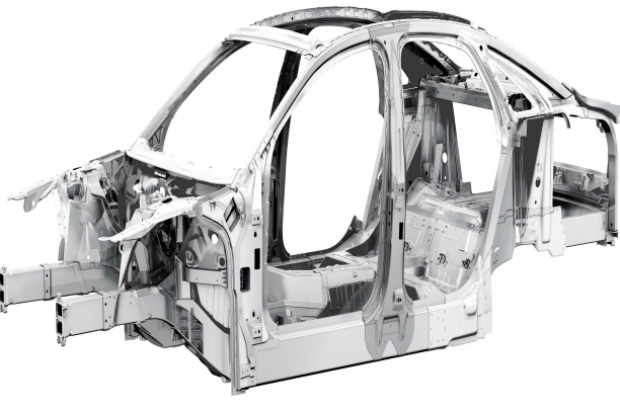- Daily & Weekly newsletters
- Buy & download The Bulletin
- Comment on our articles
Steel car bodies soon as light as aluminium?
The steel car body structures of the near future “can be as lightweight as today’s aluminium bodies”, according to WorldAutoSteel, the Brussels-based automotive group of the World Steel Association. WorldAutoSteel emphasises that all crash performance standards have been met at a comparable cost to current steel structures, reports Recycling International. The steel industry’s most recent studies boost mass savings to 39% compared to a baseline steel body structure carrying an internal combustion engine and adjusted for a battery-electric powertrain and year 2020 regulatory requirements. The FutureSteelVehicle (FSV) body would weigh just 176.8kg, “putting steel on a par with today’s aluminium production designs”, the group says. “Our latest lightweighting projects show the continuing potential of steel and demonstrate how car makers can take advantage of steel’s design flexibility and use advanced high-strength steels (AHSS) to meet their difficult challenges for improving fuel economy and reducing greenhouse gas emissions,” says director Cees ten Broek. The FSV programme has developed optimised AHSS body structures for four proposed 2015-2020 model-year vehicles: battery electric (BEV) and plug-in hybrid electric (PHEV) A- and B-class vehicles; and PHEV and fuel cell (FCEV) C- and D-class vehicles. “Although the programme focused on electrified powertrains, the design and material advancements are equally applicable for any type of automobile,” says WorldAutoSteel. The FSV programme employs various advanced steels and steel technologies, using more than 20 new AHSS grades – all of which are expected to be commercially available from 2015to 2020. “These steels answer the call of automakers for stronger, formable steels needed for lighter structures that meet increasingly stringent crash requirements. They are evidence of steel’s continual self-reinvention to meet automotive design challenges.”



















